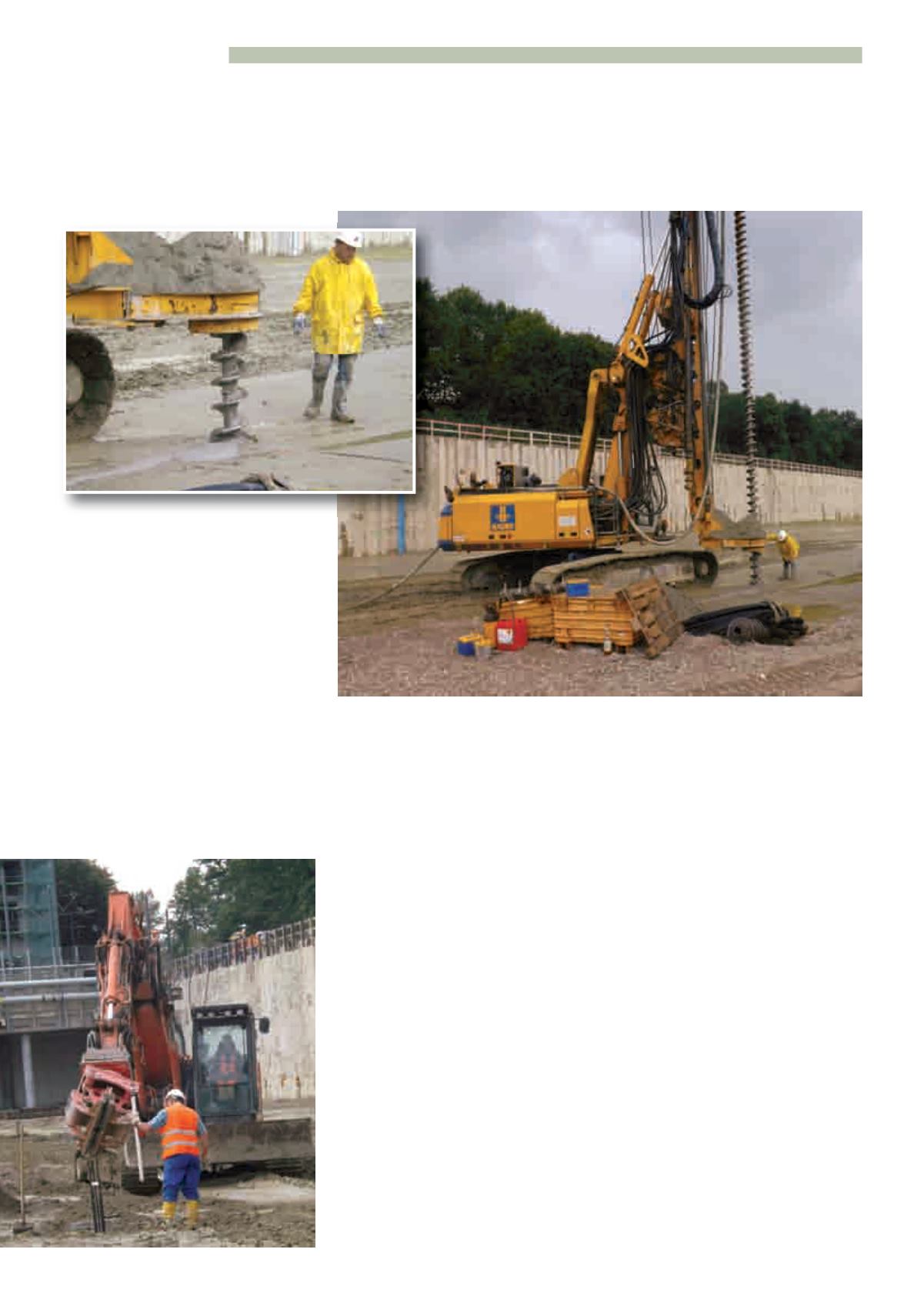
34
CONSTRUCTION EUROPE
SEPTEMBER 2014
FOUNDATIONS
Munich project
Foundations specialist
Bauer is working on a
high-profile job not far
from its headquarters
at Schrobenhausen
B
avarian-based Bauer is working
on a number of large projects in
Munich, Germany, including a major
development at Schwabinger Tor on the site
of a department store and an old Holiday Inn
hotel building.
When finished, the site – described as an
“urban quarter” – will contain a hotel, plus
apartments, offices, shops and a theatre.
Preliminary work started in 2011.
Bauer, based at Schrobenhausen some 80km
to the north, has been working on a site
which is basically a hole in the ground that is
approximately 75m x 350m. The company said
that while it was not a particularly large site,
it was a prestige position at the entrance to
Munich from the north.
VARIOUS TECHNIQUES
Florian Bauer, a project manager with the
company,saidthatvariousdifferenttechniques
were being used at the Schwabinger Tor site.
On one side, secant pile walls have been used,
with Bauer’s ground anchors – invented by the
company in 1958.
The other walls are constructedby themixed-
in-place (MIP) method, which the company
said it had developed to avoid the need for
labour-intensive transport, and to cut costs,
reduce emissions and therefore to create less
disruption for residents. It is often used to
stabilise dams and similar constructions.
The MIP technique involves a mix of
bentonite, cement and water. The soil is
broken up with a single or triple auger, and
the mix is added. Bauer said that with Munich
built mainly on gravel, this mixed with the
other constituents to produce what was
effectively concrete.
The MIP walls are also tied back with anchors
because of the close proximity of a road and
a tram line.
Bauer said it would be more usual to use MIP
all round, but a former fuel station left some
ground contaminated by diesel.
Piles are being sunk on the floor of the
site, which is down to clay, and water has to
be continuously pumped out. A Bauer BG
18H drilling rig and a Hitachi Zaxis 225 USLC
excavator are used. The rig creates a hole,
which is filled with cement. The excavator
picks up the rebar and pushes it in, before
tapping it down to the carefully measured
required height.
Bauer said that the company chose the
technique to suit the individual project,
and that there could be many variations on
one site, including temporary or permanent
anchors, sheet piles, shotcrete and others.
Bauer said, “Drill rigs can be custom made.
We talk to our customers.”
Examples of this are some “very customised”
products that have been used in an
underwater deep drilling site in the North of
Scotland.
“We do piles for wind turbines that not
everyone can do,” he said. “We make many
one-off machines.”
ce
At Schwabinger Tor, the Bauer drilling rig digs and fills the resulting hole with cement
The rebar is placed in the hole to
a set depth
The floor of the jobsite at Schwabinger Tor
is clay, and water has to be pumped away


